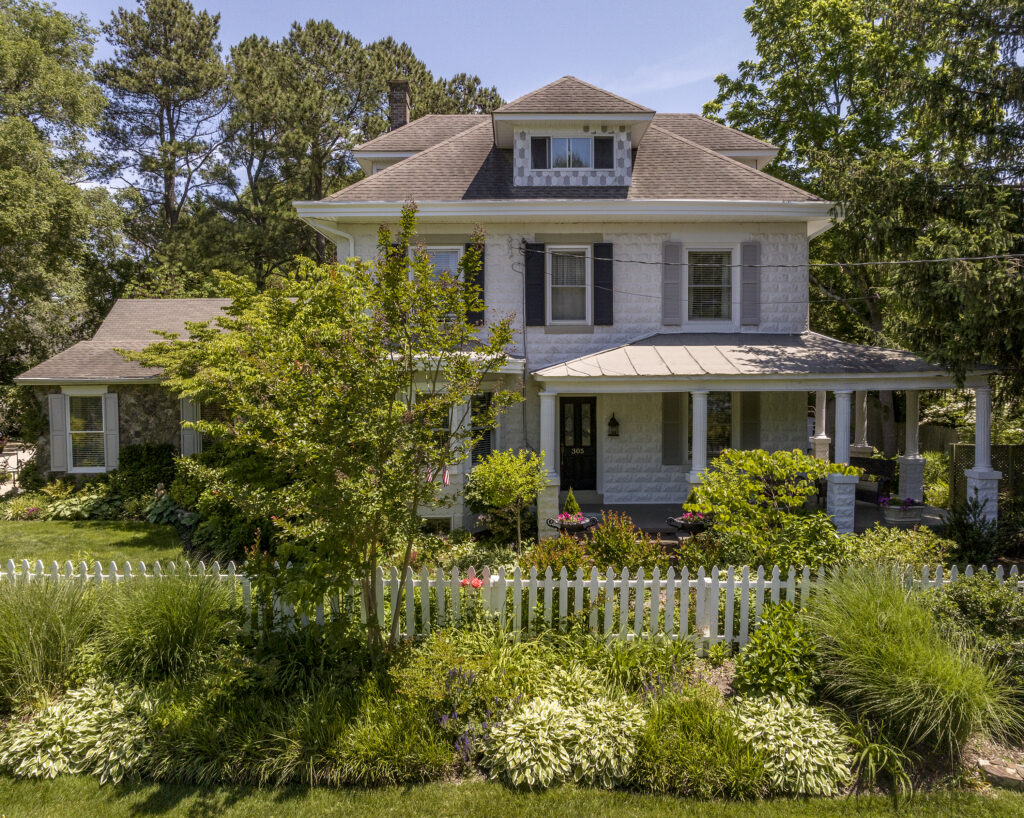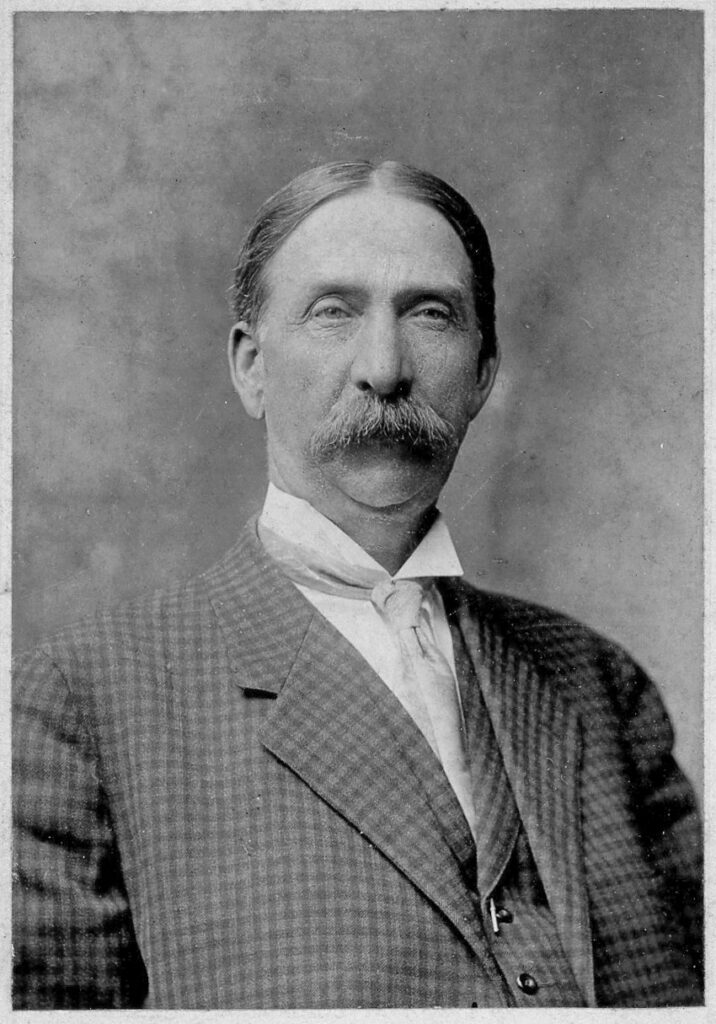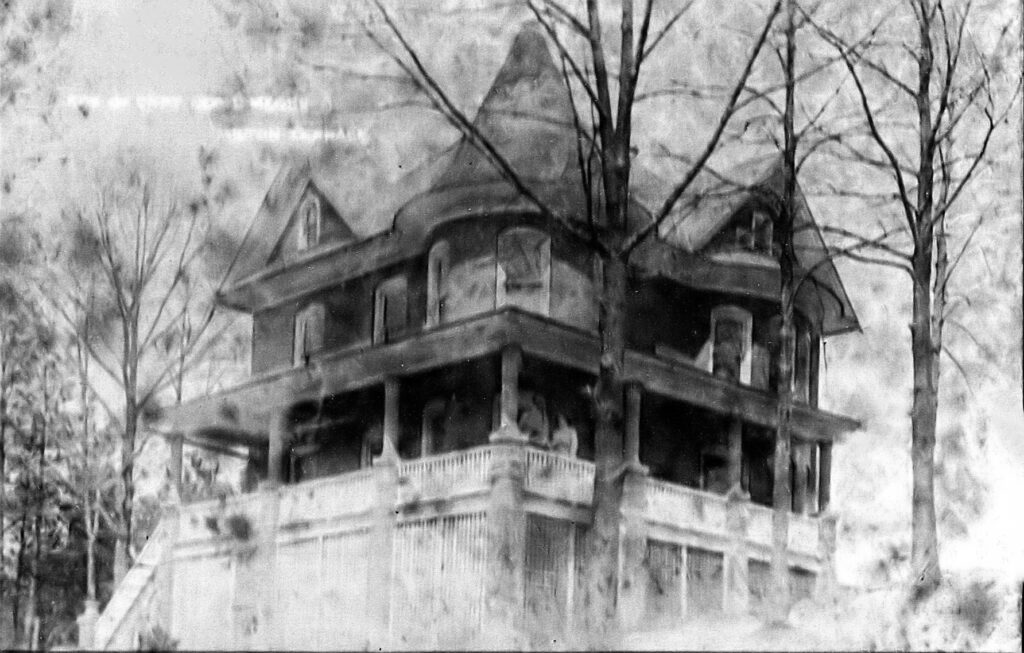Running from Chandler Street north to Atlantic Avenue, parallel to Union Street, is a short, quiet lane named Behringer Avenue. It is an odd name, having no connection to any of the venerable families that have long been a presence in Milton’s past, but nor entirely innocuous either. There is, however, an explanation about how Behringer Avenue got its name, and it involves two colorful Milton figures from the early years of the 20th century.
The first of these is Captain George Megee (1858 – 1933), one of the five Megee siblings who were commanders of and investors in schooners built in the Milton shipyards. George Megee was a local businessman as well, engaging in the export of lumber and other bulk items which he shipped from the Milton dock. In addition, like many successful mariners, he invested in real estate, typically farmland, which he traded with other businessmen like currency to settle debts or pay for other purchases. One of these land investments turned out to be something altogether different.

Sometime around 1912, George Megee bought a tract of vacant land between Atlantic Avenue on the north, the Broadkill River on the south, existing properties on the west, and a fixed boundary on the east. In all likelihood, he bought up this tract from the Hazzard family, which owned much of the vacant land bounded by Atlantic Avenue, the river, and the eastern town limit. According to a report in the Milford Chronicle on August 1, 1912, Megee laid out 40 lots of 60 x 120 feet, plus a 40 foot wide street bisecting the lots. Part of the tract included a parcel overlooking the Broadkill River, where a short time after the news report he would build his own two-story brick home, still standing today. At the time of the news report, the tract had been named Milton Terrace but the street running between the 40 lots was still unnamed.
At this point, the second Milton figure enters this story: the Rev. Charles Albert Behringer (1879 – 1937). Born in Menden, IL, his father was a scholarly Lutheran minister, and his grandfather a German immigrant. Charles came to Milton as an Episcopal deacon sometime around 1905, serving as a to-be-ordained rector of St. John the Baptist Church on Federal Street. He first made a splash in the Chronicle by innocently riding his horse into the Lavinia Woods Camp Meeting of that year, a violation of Camp etiquette for which he was forgiven as a newcomer to the town and a non-Methodist. By February of 1906 he was ordained in the Episcopalian priesthood; in April of 1906, his marriage to Avarilla King, a young woman from one of the town’s most prominent families, was celebrated with one of the most lavish weddings the town had ever seen; and by the end of the year, he was transferred to a parish in Tuckahoe, NJ.
In 1910, he returned to Milton as rector of St. John the Baptist, with a toddler in tow – Charles Albert Jr., born in 1907. During his second tenure as rector of St. John the Baptist, the Behringer family began socializing with Capt. George Megee. It is this social relationship that must have led to the Rev. Behringer buying one of the lots that Capt. Megee was offering for sale in 1912. In November of that year, the Rev. Behringer contracted for the construction of a seven room concrete block home with one bath, a reception hall, and a wraparound porch. Its exact location was not specified in any news reports, but it is easy to find today: number 305 Behringer Avenue, at the top of the tiny “hill” that rises up from the Broadkill and then levels off. The Behringers named the house “Hillcrest,” perhaps tongue-in-cheek. The original concrete block construction and wraparound porch are still intact and visible, making it easy to spot.

Reverend Behringer’s house was the first to be built on the heretofore unnamed avenue that ran between the lots, and George Megee named the street Behringer Avenue for his friend.
Captain Megee was more progressive in his thinking than most of his fellow Milton citizens. He laid the first sewage pipe in town along Behringer Avenue in 1913, shortly after a bond issue to finance a sewage system was defeated by Milton voters. There is no mention of a waste treatment facility to go with the sewage pipe, so one is left to contemplate the most likely scenario: sewage from Behringer Avenue was delivered into the Broadkill River.
Megee subsequently extended Chandler Street to the entrance of Behringer Avenue and up to his own house. Rev. Behringer bought and ran the Milton Times during the six years he spent in his second tenure as rector, and became a member of the Junior Order of United American Mechanics. In 1916, he was reassigned to a parish in Crosswicks, NJ – a promotion with an increased workload, as he now had charge of two additional smaller parishes in the area. Over the rest of his life, he took on paid positions of civic responsibility: a job with the South Jersey District of Parole and Domestic Relations, and a judgeship with the Crosswicks small claims court. Very active in local community work, he also somehow found time to give vocal and instrumental music lessons!
Sources
Milford Chronicle, 1906 – 1916



I was born and raised here, love local and area history! These pieces that you give us are priceless to me. Thank you! Keep them coming 👍
As always, I appreciate your interest and your comments – I write for people like yourself. I will keep the posts coming as long as new ideas come my way.
I read, with great interest, the story of the avenue I have lived on nearly 40 years. Being a rare Milton native, I grew up in the “new development” in the 50’s and mid 60’s. We lived on Pine Street, and as kids, in those days, were all over the development. At that time, Behringer Avenue and Spruce Street were undeveloped dirt roads and land with trees and fields, a kid’s delight. In 1965 the hosiery mill on Atlantic Street closed and we moved to North Carolina for five years, where my father remained in the business. We returned to Milton in 1969, as my parents missed Milton and friends and family we had left behind. When we came back in 1969, we rented a house on Atlantic Street, then on Broad Street, before my parents bought the Behringer house at 305. We had been told it was a Sears house! Now we know the true history!
I always get thrilled when people unknown to me discover a part of their own story in one of my posts! This is what I have always hoped would happen. Thank you so much for your comments; I didn’t know that Behringer was still unpaved in the 1950s. From the sounds of it, Capt. Megee did not succeed in selling all of the lots in the Milton Terrace tract during his lifetime.
Addendum to above comment. My parents lived at 305 Behringer until their divorce in 1976. I moved back to Milton after living in Lewes, when I built my house on the corner of Behringer and Bay in 1986.
Very much enjoy reading these stories of early Milton history. Thanks
Thank you so much for your interest in my blog posts. As long as there are people interested, I’ll keep the stories coming.
305 behringer ave was home to me when we moved from what is now primehook refuge. On the back side of porch were the most beautiful french doors . Lots of sledding was enjoyed by Milton kids. My mother would make hot chocolate by the soup pot full for everyone. Thank you for a wonderful blog as usual
It’s always a pleasure to hear from someone with a strong personal connection to a topic I’ve written about. I heard from someone else that Chandler Street where the two slopes come down to the river was prime sledding territory. The hot chocolate your Mom made adds a wonderful charm to the story! Do you by chance have any photographs of the interior of the house from when you lived there, or of the French doors?
I may have a picture of the craftsman style stairway in the reception hall where the French doors lead to. There were 2 stairways, the other came down to kitchen. Two bedrooms had a closet that lead from one bedroom to the other. I’ve searched and still can’t find the reason why.
Sorry that I don’t.